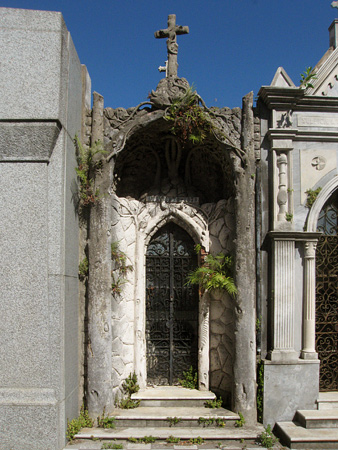
At the end of the 1700s & the beginning of the 1800s, the world was so chaotic that many people looked for either stability or a new style to mark the new era. The Americas were claiming independence, Europe was ravaged by Napoleon, & no one knew what would happen next. The standard answer was to look to the past for comfort. Neogothic & Neoclassical styles sought to recall more orderly times. Another answer was to mix old with new… romantic & exotic ideas were combined with nature images & the pintoresco style was born.
Early burials in Recoleta Cemetery happened at the same time, so a few vaults were built in the pintoresco style. The certainly stand out. For example, the above photo is of the Burgueño vault dated 1879. One of the best is the Arcave y Oyarvide vault below. Cement is sculpted like rocks, the cross is made to look like roots from a dead tree, & the base of the vault even includes barrel planters:
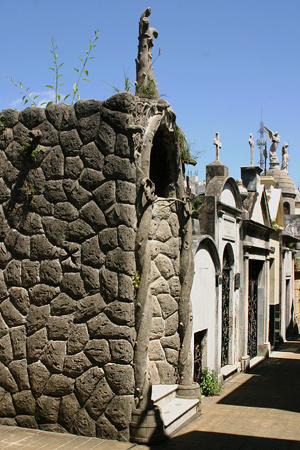
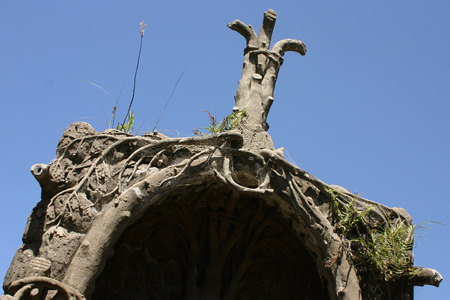
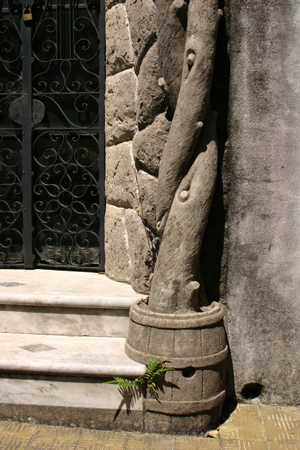
Gregorio Torres went one step further & built his tomb to mimic a grotto… both inside & out. An interesting aside is that the more these tombs sit without regular care, the more plant life sprouts in the warm & humid climate of Buenos Aires. What might be considered damage in other tombs can actually be considered a step toward the style’s ideal:
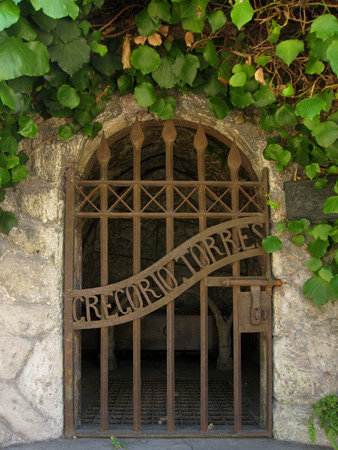
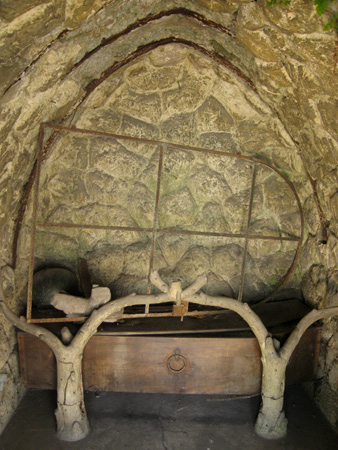
There’s something almost Tolkienian about those tombs.. beautiful!
A story on Atlas Obscura recently highlighted the tomb of Tomás Guido, also built in this style. While not as “original” as the post claims, it is certainly the most well-known pintoresco mausoleum in Recoleta Cemetery due to its size & central location.